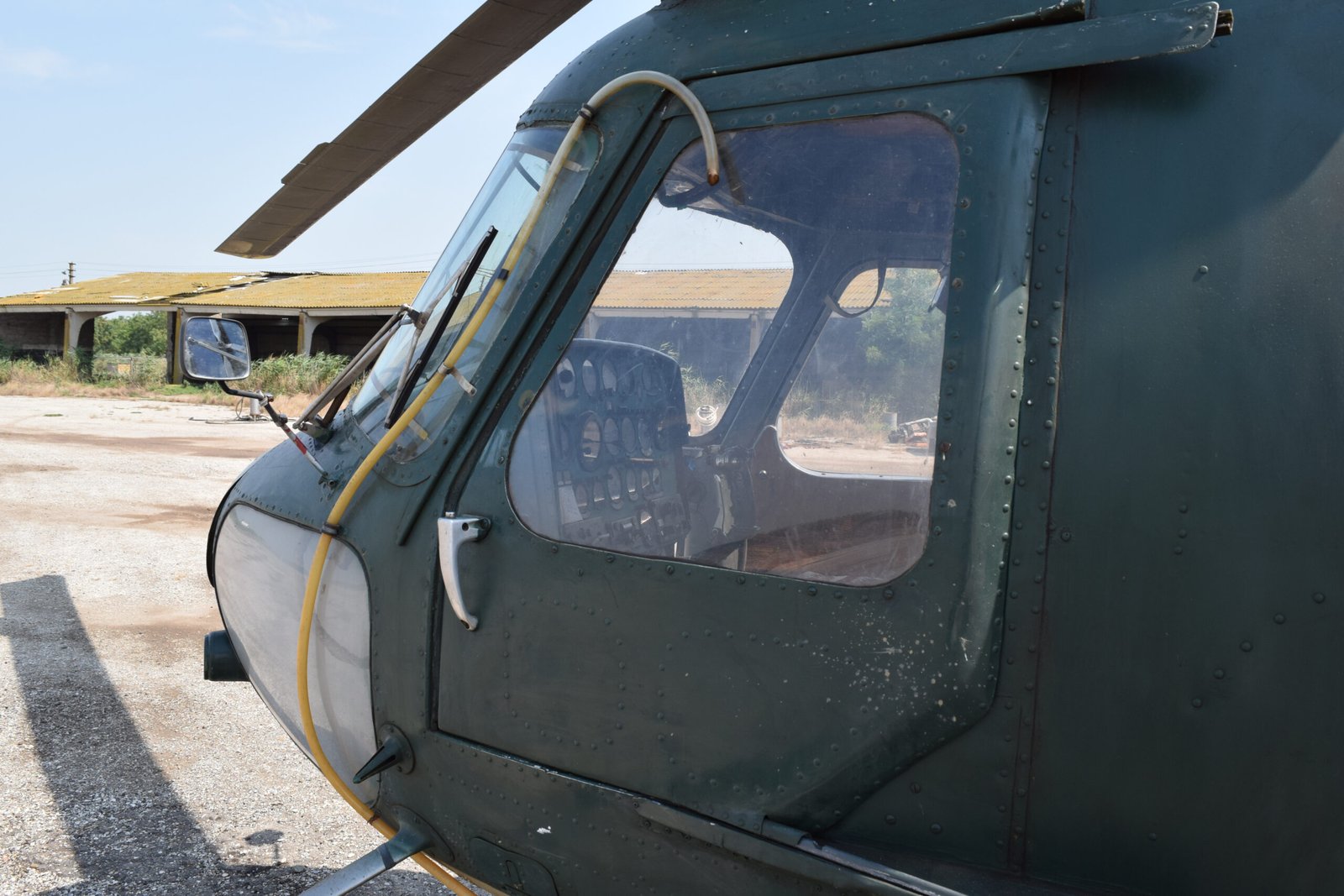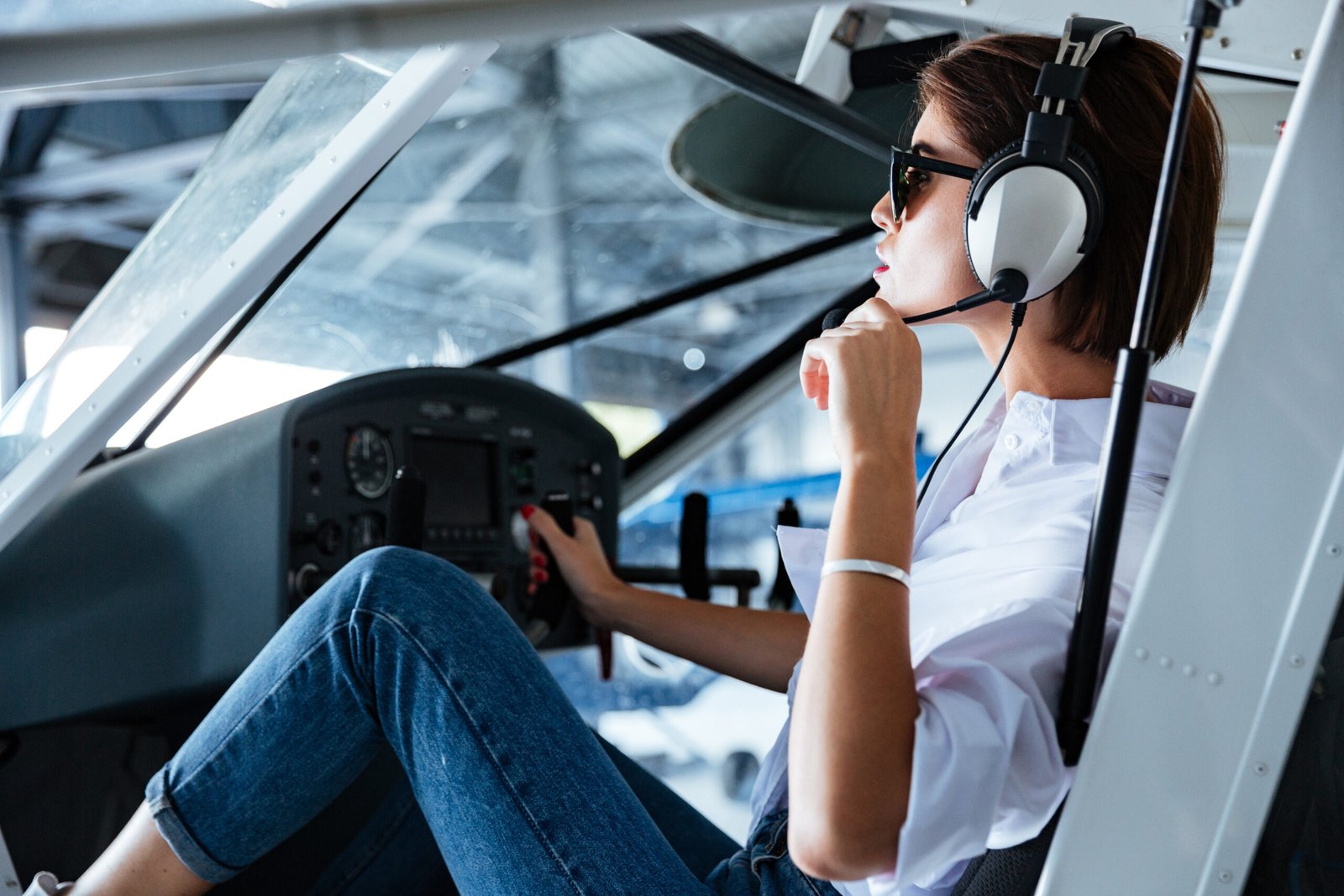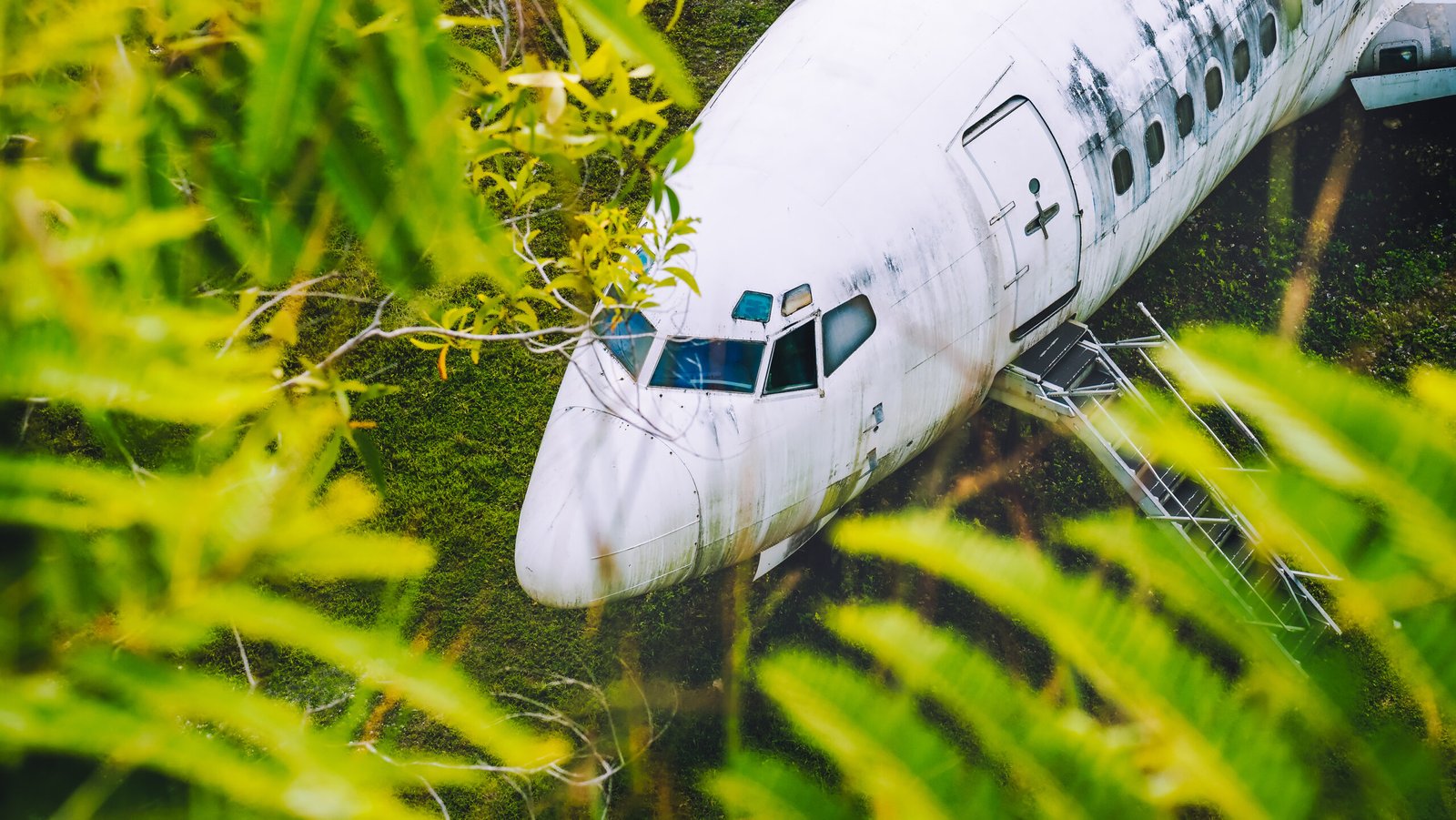Ground Schools
Flight Paths: How Aviation is Shaping Global Connectivity
In an era where the world feels smaller than ever, aviation plays a pivotal role in knitting together distant regions, cultures, and economies. The advancements in technology not only enhance safety and efficiency but also shape the future of global connectivity. As we soar through the skies, let’s explore how aviation technology training, online resources, and emerging trends like drones are revolutionizing this industry.

Aviation technology has come a long way since the days of wooden biplanes. Today’s pilots rely heavily on sophisticated simulators that replicate various flying conditions and scenarios. These state-of-the-art training tools allow aspiring aviators to hone their skills without leaving the ground. Simulators provide a risk-free environment for learning, enabling pilots to navigate thunderstorms or emergency situations while receiving real-time feedback from instructors. This shift towards virtual training is not just cost-effective; it enhances safety by ensuring that pilots are well-prepared before they take to the skies.
For those looking to delve deeper into aviation beyond traditional flight schools, a plethora of online courses and ground schools are available at your fingertips. Platforms such as Coursera and Udemy offer specialized courses covering everything from aerodynamics to air traffic control principles. The flexibility of these programs allows individuals to learn at their own pace while balancing other commitments—perfect for those aspiring to become certified pilots or aviation professionals.
In addition to formal education, staying informed about industry trends is crucial for anyone passionate about aviation. A wealth of blogs and websites can serve as invaluable resources for insights into current events, technological advancements, and career advice within the field. Some notable mentions include:
1. **AirlineGeeks.com** – Provides up-to-date news on airlines around the globe.
2. **ThePointsGuy.com** – Focuses on travel tips and maximizing loyalty points.
3. **FlyingMagazine.com** – Offers expert reviews on aircraft along with pilot stories.
4. **PPRune.org** – A popular forum among pilots where they share experiences and advice.
5. **AviationWeek.com** – Delivers in-depth analysis of aerospace developments.
Social media platforms also play a significant role in connecting aviation enthusiasts worldwide. Twitter accounts like @AeroNewsNet keep followers updated on breaking news, while Instagram profiles such as @PilotLife showcase stunning aerial photography alongside glimpses into a pilot’s daily life.

As we explore further into modern aviation landscapes, drones are proving transformative—opening new avenues for connectivity and commerce while raising questions about regulations and airspace management. Drones have found applications beyond mere recreational use; industries such as delivery services, agriculture, surveillance, and even emergency response have started integrating unmanned aerial vehicles (UAVs) into their operations.
For those intrigued by this burgeoning sector or considering a career in piloting drones commercially, it’s essential to understand FAA regulations governing drone usage. The Federal Aviation Administration provides comprehensive resources online that cover licensing requirements for remote pilots (Part 107 certification), safety guidelines for drone operation, and tips for navigating airspace restrictions.
So whether you’re an aspiring pilot eager for knowledge or simply a curious traveler keen to understand more about our interconnected world through aviation—there’s never been a better time to get involved in this dynamic field! With technology advancing rapidly alongside educational opportunities expanding infinitely—aeronautical dreams can be transformed into reality faster than ever before! Embrace your passion today; who knows where your flight path may lead?
A Bird’s Eye View: The Evolution of Commercial Aviation
The skies have always captivated humanity, and the evolution of commercial aviation has transformed our world in remarkable ways. From the early days of flight to today’s high-tech aircraft, advancements in technology and training have played a pivotal role in shaping the industry.
One area that has seen tremendous growth is aviation technology training. Modern pilots are no longer solely reliant on hands-on experience; they now hone their skills using advanced flight simulators. These sophisticated devices replicate real-life flying conditions, allowing aspiring aviators to practice maneuvers and troubleshoot emergencies without ever leaving the ground. Training programs incorporate various scenarios, from routine take-offs to challenging weather conditions, ensuring pilots are well-prepared for anything that may come their way.
For those looking to delve deeper into aviation knowledge, there’s an abundance of resources available online. Numerous blogs and websites cater to enthusiasts and professionals alike. Websites like AirlineReporter.com and TheAviationist.com offer insights into industry news and trends, while FlightGlobal.com provides comprehensive analysis on global aviation developments. Social media platforms also abound with aviation content; Twitter accounts such as @AviationWeek deliver timely updates, while Instagram is bursting with stunning aerial photography capturing the beauty of flight.
Moreover, online aviation courses have revolutionized how individuals pursue their passion for flying or seek careers in this dynamic field. Ground schools now offer flexible options for students around the globe—be it through interactive modules or live sessions with seasoned instructors. These courses cover essential topics ranging from navigation and meteorology to regulations governing airspace usage. They provide a solid foundation for aspiring pilots who wish to turn their dreams into reality.

In addition to traditional pilot roles, commercial aviation offers a variety of job opportunities within its expansive ecosystem. Whether you aim to be a commercial airline captain or an air traffic controller guiding flights safely through busy airspace, the demand for skilled professionals continues to rise. Resources such as FAA.gov serve as excellent starting points for understanding licensing requirements and career paths available in this field.
As we traverse further into this decade, one cannot overlook the impact of drones on the future of aviation. Once merely a novelty gadget for hobbyists, drones are now essential tools across numerous industries—from agriculture monitoring to disaster response efforts. The FAA is actively involved in regulating these unmanned aircraft systems (UAS), ensuring safety standards are met while promoting innovation within this burgeoning sector.
To stay informed about changes affecting both manned and unmanned flight operations, it’s vital to keep up with official resources like FAA links that provide updates on regulations and new technologies entering the market.
The trajectory of commercial aviation showcases not just technological marvels but also our collective ambition as humans striving for progress. Whether you’re an aspiring pilot mastering your skills through simulators or someone exploring drone technology’s potential impact on our lives, there’s never been a more exciting time to engage with this vibrant industry.
From ground school courses laying down foundational knowledge to blogs offering daily nuggets of wisdom about contemporary issues facing aviation today—the possibilities are endless! So fasten your seatbelts; we’re just getting started on this exhilarating journey through the skies!
Wings of Change: How Aviation is Transforming Global Travel
In the ever-evolving landscape of travel, aviation stands at the forefront, catalyzing a transformation that reshapes how we explore our world. With technological advancements, innovative training methods, and a burgeoning interest in drones, the future of aviation is as thrilling as it is complex. Let’s delve into how these elements are revolutionizing global travel.
One of the most significant shifts in aviation today stems from enhanced technology training. Gone are the days when pilots relied solely on traditional flight school experiences. Modern simulators have taken center stage in pilot training programs worldwide. These high-tech devices provide an immersive learning environment where aspiring aviators can practice various flight scenarios without ever leaving the ground. From emergency landings to navigating inclement weather, simulators offer invaluable hands-on experience that prepares pilots for real-world challenges.

For those eager to dive deeper into the world of aviation, a plethora of online resources awaits. Numerous blogs and websites cater to both enthusiasts and professionals alike. Websites like Aviation Week and FlightGlobal deliver industry news while blogs such as AirlineReporter and The Points Guy offer insights into travel trends and tips for maximizing benefits from loyalty programs. Social media platforms amplify this knowledge-sharing; follow accounts like @AviationDaily on Twitter or @AirplaneMode on Instagram for daily doses of aerial inspiration.
If you’re considering a career as a pilot or wish to further your aviation education, there’s no shortage of online courses available today. Institutions like Embry-Riddle Aeronautical University offer comprehensive programs ranging from private pilot certifications to advanced degrees in aeronautics. Ground schools provide essential knowledge about aircraft systems, navigation techniques, and regulations governed by authorities such as the Federal Aviation Administration (FAA). For those interested in becoming commercial pilots or flight instructors, these educational pathways are critical stepping stones toward achieving your goals.
The increase in drone technology is another exciting facet revolutionizing aviation today. Drones have transitioned from niche gadgets to vital tools across various sectors—including photography, agriculture, delivery services, and even disaster management. Their ability to access hard-to-reach areas quickly has made them indispensable assets in numerous industries. With the FAA actively working on integrating drones into national airspace through updated regulations and safety protocols, it’s clear that their presence will only grow stronger.
A wealth of resources exists for staying informed about drone operations too—check out the FAA’s dedicated pages on remote pilot certification or Part 107 regulations for commercial drone use. Engaging with local UAV communities via social platforms fosters collaboration among enthusiasts looking to share insights or troubleshoot challenges together.
As we embrace this era of rapid change within aviation—driven by technological innovation and evolving educational frameworks—it’s essential not just to keep up but also to participate actively in this dynamic field. Whether you’re aspiring for a cockpit seat or simply enjoy watching planes soar through azure skies, understanding these transformations enriches your appreciation for global travel’s intricacies.

In conclusion, as we stand at this remarkable juncture where tradition meets technology within aviation realms—from sophisticated simulators enhancing pilot training to drones redefining logistics—the wings of change are indeed lifting us into an exciting future filled with possibilities! So buckle up; it’s going to be one exhilarating flight ahead!
From Wright to Flight: A Journey Through Aviation History
Aviation has come a long way since the Wright brothers took their first powered flight in 1903. Today, technology has transformed how we learn, train, and operate within this dynamic field. The evolution of aviation is not just a story of aircraft; it’s also about the tools and resources that have shaped the industry.
One of the most significant advancements in aviation training is the use of flight simulators. These sophisticated devices replicate real-world flying conditions while keeping costs down and safety at the forefront. Simulators allow aspiring pilots to practice takeoffs, landings, and emergency situations without ever leaving the ground. Institutions worldwide are implementing these high-tech solutions into their curricula, making training more accessible and efficient.
For those looking to dive deeper into aviation knowledge or connect with enthusiasts, numerous blogs, websites, and social media platforms cater to all facets of this field. Websites like Airliners.net and FlightAware offer insights into flight tracking and airline operations while forums such as PPRuNe (Professional Pilots Rumour Network) provide a platform for pilots to exchange experiences and advice. Social media channels on platforms like Instagram feature stunning aerial photography alongside accounts dedicated to sharing news updates in aviation. Twitter also serves as an excellent resource for staying informed with breaking news from major airlines or regulatory bodies.

Online aviation courses have gained popularity in recent years, offering flexibility for those seeking to enhance their skills or pivot careers entirely. Ground schools provide foundational knowledge for aspiring pilots, covering essential topics such as navigation and meteorology. Institutions like Embry-Riddle Aeronautical University offer comprehensive online programs tailored for various levels—ranging from private pilot licenses to advanced degrees in aeronautics. With so many options available online, anyone can find a course that suits their schedule and learning style.
The demand for qualified pilots continues to soar globally; thus, job opportunities abound within this field. Airlines are actively seeking skilled individuals who possess both technical expertise and interpersonal abilities to excel in customer service roles as well as command positions in the cockpit. Platforms like PilotCareerCenter.com list job openings while providing guidance on resume-building tailored specifically for aviators.
Additionally, the rise of drones represents another exciting chapter in aviation history. Once limited primarily to military applications, drones are now utilized across various sectors—from agriculture monitoring to aerial photography—and their use is expected only to increase. As regulations evolve under organizations like the FAA (Federal Aviation Administration), individuals interested in drone piloting must stay informed about licensing requirements and safety guidelines through official FAA links such as FAA.gov/uas.
Navigating through this expansive world requires access to reliable resources; luckily today’s tech-savvy society provides ample tools at our fingertips. Whether you’re an aspiring pilot exploring online courses or simply someone fascinated by what lies above us—the sky’s no longer the limit! Embracing these innovations offers endless possibilities not just for career paths but also for hobbyists eager to take part in this captivating journey through time—a journey fueled by human curiosity and technological advancement that traces back over a century ago when two brothers dared dream big!

Flying Green: How Sustainable Practices are Transforming Aviation
In recent years, the aviation industry has been undergoing a remarkable transformation, driven by the urgent need for sustainable practices. Amidst growing environmental concerns, innovative technologies and education are paving the way for a greener future in flying. From advanced simulators to drones, the landscape of aviation is evolving rapidly.

One of the cornerstones of this evolution is technology training. Flight simulators have become indispensable tools in pilot training programs. These sophisticated machines not only provide aspiring pilots with a realistic flying experience but also allow them to practice emergency procedures and understand complex aircraft systems without any risk. With features that mimic real-world weather conditions and air traffic scenarios, simulators are crucial for preparing pilots to handle challenges they might encounter in actual flight situations. Moreover, as airlines increasingly prioritize sustainability, training programs are beginning to incorporate eco-friendly practices into their curricula.
For anyone looking to dive deeper into the world of aviation or enhance their knowledge about green initiatives within the sector, numerous blogs and websites serve as excellent resources. Notable recommendations include “Airline Reporter,” which covers industry news and trends; “Aviation Week,” offering insights into technological advancements; and “GreenAir Online,” dedicated specifically to sustainable aviation developments. Social media platforms like Instagram and Twitter also host vibrant communities where enthusiasts share insights, experiences, and discussions about sustainable flying practices.
Online courses have surged in popularity over recent years, providing flexible learning opportunities for aspiring pilots and aviation professionals alike. Ground schools now offer comprehensive programs covering everything from aircraft systems to navigation techniques online. Institutes such as Embry-Riddle Aeronautical University provide courses tailored to modern demands—focusing on sustainability as part of their curriculum. Whether you’re aiming for a career as a commercial pilot or exploring roles in airport management or aerospace engineering, these online resources can help you gain valuable knowledge while adhering to your own schedule.
Drones represent another fascinating aspect of this transformative phase in aviation. As unmanned aerial vehicles (UAVs) become more commonplace, industries beyond traditional aviation are leveraging their potential for enhancing efficiency and reducing carbon footprints. Drones are employed in agriculture for crop monitoring; they assist first responders during emergencies; even package delivery services are experimenting with UAVs as an alternative transport method that could reduce road congestion and emissions.

For those interested in pursuing careers within this dynamic sector, job opportunities abound—from piloting aircraft to working on environmental strategies at major airlines. The FAA’s website is an essential resource for aspiring aviators wanting information on regulations, safety guidelines, and certification processes necessary for various roles within the field.
As we witness shifts toward greener practices across all facets of life—including transportation—the aviation industry is stepping up its game with commitment and creativity. By embracing technology-driven solutions like flight simulators and drones while fostering educational opportunities through online courses and ground schools, there’s hope that we can achieve more sustainable air travel without compromising safety or quality.
In conclusion, flying green is not just a trend; it’s becoming an integral part of our future in aviation. With continued innovation paired with education focused on sustainability principles, we can transform how we navigate our skies—ensuring they remain open for generations yet to come!




